 |
|
The Canoe Frame
The Dogrib hunting canoe was generally between 3.5 and 5 metres in length, with an average width of 41 cm and a depth between 23 and 28 cm.
|
|
|
|
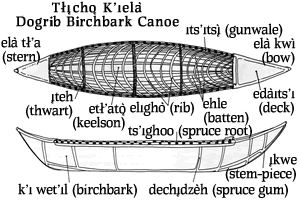 |
|
 |
|
Preparing the Bed
To ensure there is no damage to the canoe in the building phase, a bed is made by filling a shallow depression with moss. The birchbark canoe will sit in the building bed throughout its construction.
|
|
 |
|
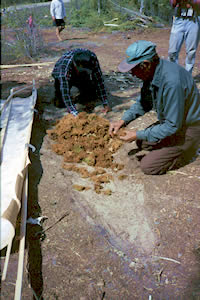 |
|
 |
|
Laying the Bottom
The next step is to sew the many pieces of birchbark together. The bottom is
made from two or three specially selected pieces of bark, which are carefully
sewn together. The pieces are chosen for maximum thickness and for being free
of holes. Split spruce roots, supple from soaking in water, are used to stitch
the pieces together. This will form the bottom of the canoe. The side pieces are
later sewn to the bottom.
|
|
 |
|
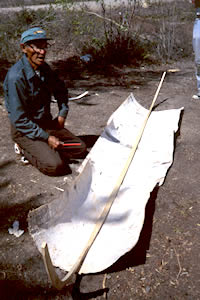 |
|
 |
|
Staking the Sides
A temporary building frame is fashioned from roughly shaped spruce poles. This
frame will keep the birchbark in the proper form as other pieces are added. The
frame will be removed and discarded once the actual canoe frame is in place. Spruce
stakes are driven into the ground around this building frame to hold the sides
of the canoe together while the bark is sewed and the structure added.
|
|
 |
|
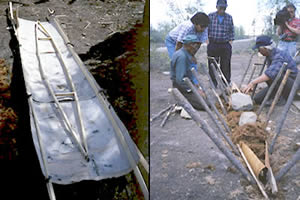 |
|
 |
|
Attaching the Gunwales
Once the birchbark sides are attached to the bottom of the canoe, the gunwales
are added. The gunwales are crafted from long pieces of spruce wood, using an
axe and a crooked knife. The gunwales are sewn to the birchbark using split spruce
roots.
|
|
 |
|
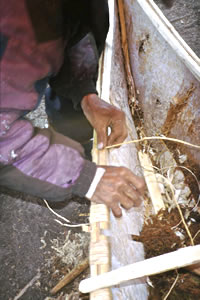 |
|
 |
|
Adding the keelson and stem-pieces
When most of the birchbark on the sides is in place, the stem-pieces and keelson are added. The keelson is also made from a long piece of spruce wood, and is bound to the stem-pieces with spruce roots. The curved stem-piece is carved out of the part of the spruce tree that formed the root and lower trunk.
|
|
 |
|
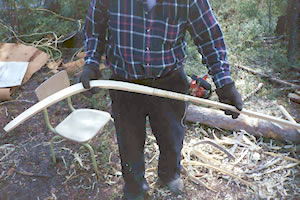 |
|
 |
|
Sewing the Bark
The remaining pieces of bark are stitched on at this point. The next stage requires the bark be pegged to the stem-piece for easier sewing.
|
|
 |
|
 |
|
 |
|
Thwarts, Battens and Ribs
The thwarts are carved from spruce using a crooked knife, and then inserted between
the gunwales, across the canoe. Battens and ribs, also crafted from spruce wood,
are added next. The numerous battens run length-wise along the canoe bottom, while
the ribs are placed across the battens.
|
|
 |
|
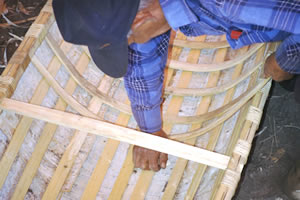 |
|

